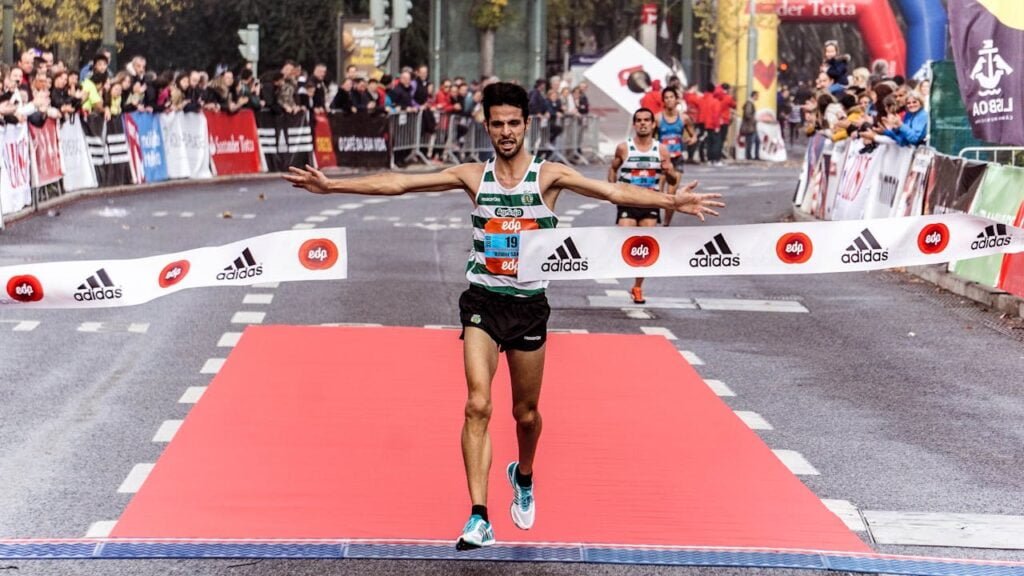Introduction to Marathon Training
Hello dear readers,
Before we dive into today’s content, I want to share something important with you. Although I’m passionate about the topic we’re going to discuss and have spent a lot of time researching and learning about it, it’s essential to clarify that I am not a professional in the field.
What you will read next are insights and information that I have gathered based on my personal experience and self-taught studies. My intention is to start a conversation, share what I’ve discovered, and maybe help someone who is on the same journey of discovery. If you are an expert on the subject, your comments and guidance are very welcome, as we are all here to learn and grow together.
Now, let’s get to the good stuff!
Marathon training is an essential commitment for anyone aspiring to run a full marathon, particularly for beginners. Preparing for a marathon requires not only physical endurance but also mental fortitude, making it a comprehensive journey of transformation. The fundamental aim of marathon training is to build the stamina, strength, and resilience needed to complete the 26.2-mile challenge successfully.
The importance of structured training cannot be overstated. Without proper preparation, the risk of injury and burnout significantly increases. A well-crafted training regimen focuses on gradually increasing mileage, integrating rest days, and incorporating varied workouts to avoid overuse injuries. This progressive approach helps the body adapt to the increasing physical demands, ensuring that runners can withstand the rigors of marathon day.
Moreover, marathon training offers numerous physical benefits. It enhances cardiovascular health, improves muscle endurance, and promotes overall fitness. Regular long-distance running helps in weight management, increases lung capacity, and strengthens the heart. Additionally, it fosters better joint health and muscular endurance, which are crucial for sustaining long periods of activity.
On the mental front, marathon training instills discipline, enhances mental toughness, and builds resilience. The commitment to a regular training schedule teaches time management and goal-setting skills. Overcoming the challenges and setbacks encountered during training builds confidence and a sense of accomplishment, which can be profoundly rewarding.
For beginners, understanding the best strategies for a beginner to be able to run a marathon is pivotal. This involves not just physical preparation but also adopting a positive mindset, setting realistic goals, and remaining patient throughout the training process. The journey to run a marathon is as much about mental preparation as it is about physical readiness.
In essence, marathon training is a holistic endeavor that prepares runners for the physical and mental demands of the race. It requires dedication, consistency, and a structured approach to achieve the ultimate goal of crossing the finish line. By embracing the training process, runners can transform themselves and accomplish feats they once thought impossible.
1 – Establishing a Training Plan

Embarking on a journey to run a full marathon requires a well-structured and tailored training plan. For beginners, establishing a training plan is essential to ensure a steady progression in endurance, strength, and overall fitness. There are various training plans available that cater to different needs and preferences, making it crucial to choose one that aligns with your individual fitness level and goals.
Online resources offer a plethora of training plans designed specifically for novice runners. Websites such as Runner’s World and Hal Higdon provide comprehensive guides that outline weekly mileage, rest days, and cross-training activities. These plans are often flexible, allowing runners to adjust based on their personal schedules and progress.
Mobile applications have also become invaluable tools for marathon training. Apps like Runkeeper, Strava, and Nike Run Club offer personalized training programs that adapt to your performance. These apps track your runs, provide real-time feedback, and even include audio coaching to keep you motivated. The convenience of having a training plan at your fingertips cannot be overstated, especially for those with busy lifestyles.
For those seeking a more personalized approach, hiring a personal trainer or running coach can be highly beneficial. A professional can create a customized training plan that takes into account your current fitness level, running experience, and specific goals. They can also provide regular feedback, adjust your plan as needed, and offer support and motivation throughout your training journey. This option, though potentially more costly, can significantly enhance your training experience and increase the likelihood of successfully completing the marathon.
When selecting a training plan, it is crucial to consider factors such as your current fitness level, time availability, and personal preferences. Whether you opt for an online plan, a mobile app, or a personal trainer, the key is to remain consistent and committed. A well-chosen training plan will not only help you to run a marathon but also ensure that you do so in a healthy and sustainable manner.
2 – Building a Solid Running Base

One of the foundational steps in preparing to run a full marathon is building a solid running base. This initial stage of marathon training is crucial as it lays the groundwork for more intense training phases to come. The primary focus during this period should be on increasing mileage gradually to avoid injuries, ensuring that the body adapts to the demands of long-distance running without experiencing undue stress.
For beginners, the best strategies to be able to run effectively start with beginning slowly. Start with shorter, manageable distances and progressively increase the distance you run each week. A general guideline is to add no more than 10% to your total weekly mileage. This gradual increase allows your muscles, joints, and cardiovascular system to adapt, reducing the risk of overuse injuries.
Incorporating rest days into your training schedule is equally important. Rest days are essential for recovery, allowing your body to repair and strengthen itself. Typically, one or two rest days per week are recommended, depending on your fitness level and how your body responds to training. On these days, consider engaging in low-impact activities like walking or yoga to maintain flexibility and aid recovery.
Additionally, listening to your body is paramount. Pay attention to any signs of fatigue, soreness, or discomfort and adjust your training accordingly. Pushing through pain can lead to more severe injuries and setbacks. If you experience persistent pain, it may be wise to consult with a healthcare professional or a running coach.
To summarize, establishing a robust running base is a critical component of marathon training. By starting slow, increasing distance incrementally, and incorporating rest days, you set the stage for successful marathon preparation. These steps not only enhance your physical endurance but also build the mental resilience necessary to tackle the challenges of marathon running.
3 – Incorporating Strength Training

Strength training is an essential component for runners preparing to run a full marathon. By incorporating strength workouts into your regimen, you can enhance muscle strength, boost endurance, and improve overall running performance. While the primary focus for marathon runners is often on cardiovascular fitness, neglecting strength training can lead to muscle imbalances, increased injury risk, and suboptimal performance.
Building muscle strength and endurance through targeted exercises helps runners maintain proper form, especially during the latter stages of a marathon when fatigue sets in. Stronger muscles can better support joints, reduce the impact on ligaments and tendons, and enhance overall biomechanical efficiency. This translates to improved running economy and the ability to sustain a faster pace for a longer duration.
Effective strength training exercises for runners typically focus on the core, lower body, and upper body. Core exercises, such as planks and Russian twists, are vital for stabilizing the torso and maintaining balance. For the lower body, exercises like squats, lunges, and calf raises target the major muscle groups used in running, including the quadriceps, hamstrings, glutes, and calves. Upper body strength, often overlooked, is equally important; exercises such as push-ups and dumbbell rows can enhance arm drive and overall posture.
To fully reap the benefits of strength training, it is recommended to incorporate these workouts at least twice a week. A well-structured plan might include a mix of bodyweight exercises and resistance training using free weights or resistance bands. Ensuring a balanced approach with both upper and lower body exercises is crucial for comprehensive strength development.
Ultimately, integrating strength training into your marathon preparation is one of the best strategies for a beginner to be able to run efficiently and safely. By dedicating time to build muscle strength and endurance, you will not only improve your ability to run a marathon but also reduce the likelihood of injuries and enhance your overall athletic performance.
4 – The Role of Cross-Training

Cross-training plays a pivotal role in any comprehensive marathon training plan. For runners aiming to run a marathon, incorporating cross-training into their routine can significantly improve overall fitness and prevent burnout. This multifaceted approach to training not only enhances cardiovascular fitness but also promotes muscle balance and reduces the risk of injury.
One of the primary benefits of cross-training is its ability to target different muscle groups that are not typically engaged during running. For instance, swimming is an excellent cross-training activity that offers a full-body workout. It strengthens the upper body, improves lung capacity, and provides a low-impact way to enhance cardiovascular endurance. Similarly, cycling is another effective cross-training exercise. It works the quadriceps and hamstrings while giving the knees a break from the repetitive impact of running. This can be particularly beneficial for those who are prone to joint injuries.
Yoga is also an invaluable addition to a runner’s training regimen. It fosters flexibility, improves balance, and aids in recovery by stretching muscles that are often tight from running. Additionally, yoga enhances mental focus and reduces stress, which are crucial for maintaining the discipline needed to run a full marathon.
Moreover, cross-training can help runners break the monotony of their running routines. Activities such as rowing, Pilates, or even strength training can add variety to a training schedule, making it more engaging and sustainable. This variety not only keeps runners motivated but also ensures a well-rounded fitness approach, addressing both aerobic and anaerobic systems.
Incorporating cross-training into a marathon training plan can be an effective strategy for beginners to run better. By diversifying their workouts, runners can achieve a balanced fitness level, improve overall performance, and increase their chances of successfully completing their first marathon. Therefore, cross-training should be regarded as an essential component of any marathon preparation strategy.
5 – Nutrition and Hydration Strategies

Proper nutrition and hydration are paramount for anyone aiming to run a marathon successfully. A balanced diet is essential, comprising carbohydrates, proteins, and fats, each playing vital roles in training and recovery. Carbohydrates act as the primary energy source, proteins aid in muscle repair, and fats provide sustained energy. Runners should focus on consuming whole grains, lean meats, fruits, vegetables, and healthy fats like avocados and nuts.
Hydration is equally critical. Runners should begin hydrating well before their runs, ensuring they drink water throughout the day. During runs, especially longer distances, it is important to maintain hydration by sipping water or electrolyte drinks every 20 minutes. Post-run hydration assists in recovery, helping to replenish lost fluids and electrolytes. A good rule of thumb is to drink about 16-24 ounces of fluid for every pound lost during a run.
Specific foods and supplements can also bolster recovery and performance. For example, bananas provide potassium, which helps prevent cramps, while lean proteins like chicken or tofu assist in muscle repair. Supplements such as BCAAs (branched-chain amino acids) can support muscle recovery, and electrolyte tablets can help maintain hydration levels.
Incorporating these nutritional and hydration strategies into your training regimen can significantly enhance your ability to run a full marathon. By maintaining a balanced diet and proper hydration, runners can optimize their performance, reduce risk of injury, and improve recovery times. Understanding and implementing these strategies is one of the best ways for beginners to learn how to run better and achieve their marathon goals.
6 – The Importance of Rest and Recovery

When preparing to run a full marathon, incorporating rest and recovery into your training plan is just as crucial as the running itself. Rest days are not merely days off but essential components of an effective training regimen. They allow your muscles time to repair, adapt, and grow stronger, reducing the risk of overtraining injuries. Overlooking the importance of rest can lead to chronic fatigue, poor performance, and potentially severe injuries that could derail your marathon aspirations.
Adequate recovery techniques are instrumental in maintaining peak physical condition. Stretching, for instance, is a simple yet effective way to improve flexibility and relieve muscle tension. Incorporating both dynamic stretches before a run and static stretches post-run can significantly enhance your overall performance.
Another valuable recovery tool is foam rolling. This self-massage technique helps in breaking down scar tissue, improving blood circulation, and alleviating muscle soreness. Foam rolling can target specific muscle groups that tend to get tight from running, such as the calves, hamstrings, and quadriceps, thereby promoting faster recovery.
Beyond physical interventions, ensuring sufficient sleep is paramount. Quality sleep is when your body undertakes most of its repair and regeneration processes. During deep sleep stages, growth hormone is released, facilitating muscle healing and energy restoration. Aiming for 7-9 hours of sleep per night can significantly enhance your ability to run better and sustain training intensity.
Incorporating these rest and recovery strategies not only prepares you to run a marathon but also equips you with the best strategies for a beginner to be able to run efficiently. Remember, strategic rest can be the deciding factor between a well-prepared marathon runner and one who faces setbacks due to overtraining.
7 – Mental Preparation and Motivation

Training to run a full marathon is not solely a physical endeavor; mental preparation and motivation play a critical role in achieving success. For beginners aiming to run a marathon, understanding and addressing the mental challenges can be just as important as physical training. One of the best strategies for a beginner to be able to run is setting realistic and achievable goals. Break down the marathon training into smaller milestones, such as completing specific distances or mastering particular paces. These incremental goals provide a sense of accomplishment and keep you motivated throughout the training period.
Visualization is another powerful tool in mental preparation. Spend a few minutes each day visualizing the race day—from the start line to crossing the finish line. Imagine how you will feel, the cheers from the crowd, and even the challenges you might face. This mental rehearsal can help reduce anxiety and increase confidence, making it easier to overcome obstacles on the actual day. Many seasoned runners attribute their success to the power of visualization, which can transform your mindset and help you stay focused.
Overcoming mental barriers is an essential aspect of marathon training. Common challenges include self-doubt, boredom, and fatigue. Create a positive inner dialogue to counteract negative thoughts. Remind yourself why you started this journey and reflect on the progress you’ve made. Surround yourself with a support network of fellow runners, friends, or family who can offer encouragement and keep you accountable. Joining a running group or community can also provide the camaraderie and motivation needed to stay committed.
Staying motivated during long runs and tough training periods requires a strategic approach. Incorporate variety into your runs by exploring new routes or integrating interval training. Listening to music, podcasts, or audiobooks can help distract your mind and make time pass more quickly. Celebrate your achievements, no matter how small, and reward yourself for reaching your goals. By maintaining a positive mindset and staying motivated, you’ll find it easier to adhere to your training plan and ultimately run a full marathon successfully.
8 – Tapering and Race Day Preparation

As you approach the final weeks before your first marathon, the tapering phase becomes critical to your success. Tapering involves a strategic reduction in training mileage to allow your body to recover and build strength for race day. Typically, the tapering period lasts between two to three weeks, during which you gradually decrease your running volume while maintaining the intensity of your workouts. This phase is designed to help runners feel rested, strong, and ready to run a full marathon.
During tapering, it’s crucial to maintain a balanced diet rich in carbohydrates, proteins, and healthy fats to fuel your body adequately. Hydration also plays a key role, so be sure to drink plenty of water throughout the day. Proper sleep and rest are equally important to ensure your muscles recover fully and you feel refreshed.
As race day approaches, preparing the right gear and nutrition is essential. Here’s a checklist of essentials to help you feel confident and prepared:
- Running Shoes: Ensure your shoes are well-fitted and broken in, with enough support to carry you through the marathon.
- Clothing: Dress in moisture-wicking, breathable fabrics suitable for the weather conditions on race day.
- Nutrition: Plan your pre-race meal and carry energy gels or bars for mid-race fueling. Familiarize yourself with the nutrition options available on the course.
- Hydration: Know the locations of water stations along the route and consider carrying a hydration pack or belt if necessary.
- Mental Strategies: Develop a race plan, set realistic goals, and practice positive self-talk to stay motivated throughout the race.
- Race Day Logistics: Plan your transportation to the start line, identify a meeting spot for family and friends, and familiarize yourself with the course map.
By focusing on tapering and thorough race day preparation, you can enhance your chances of a successful and enjoyable marathon experience. These best strategies for a beginner to be able to run a marathon will help you cross the finish line with confidence.
Conclusion: Bringing It All Together
Embarking on the journey to run a full marathon requires a comprehensive and balanced training approach. Throughout this blog, we have explored the 10 best training options for runners, emphasizing the importance of incorporating various elements into your regimen. A well-rounded training plan is crucial for success and should include not only running but also complementary activities like strength training and cross-training. These components work in harmony to build endurance, enhance muscle strength, and prevent injuries.
Proper nutrition is another cornerstone of marathon preparation. Fueling your body with the right nutrients ensures sustained energy levels and optimal recovery. Equally important is the emphasis on rest and recovery, allowing your body to repair and strengthen itself after rigorous training sessions. Mental preparedness is often overlooked but is essential for pushing through the inevitable challenges that arise during marathon training and on race day.
Staying committed to your training plan is vital. Consistency and dedication are key factors that will enable you to run better and achieve your marathon goals. Remember, every runner starts as a beginner, and the best strategies for a beginner to be able to run a marathon successfully include gradual progression, listening to your body, and seeking support from the running community.
In conclusion, with the right preparation, running a marathon is an attainable goal. By integrating these training options into your routine, you set yourself up for a successful and enjoyable marathon experience. Stay focused, remain motivated, and trust in the process. Happy running!








